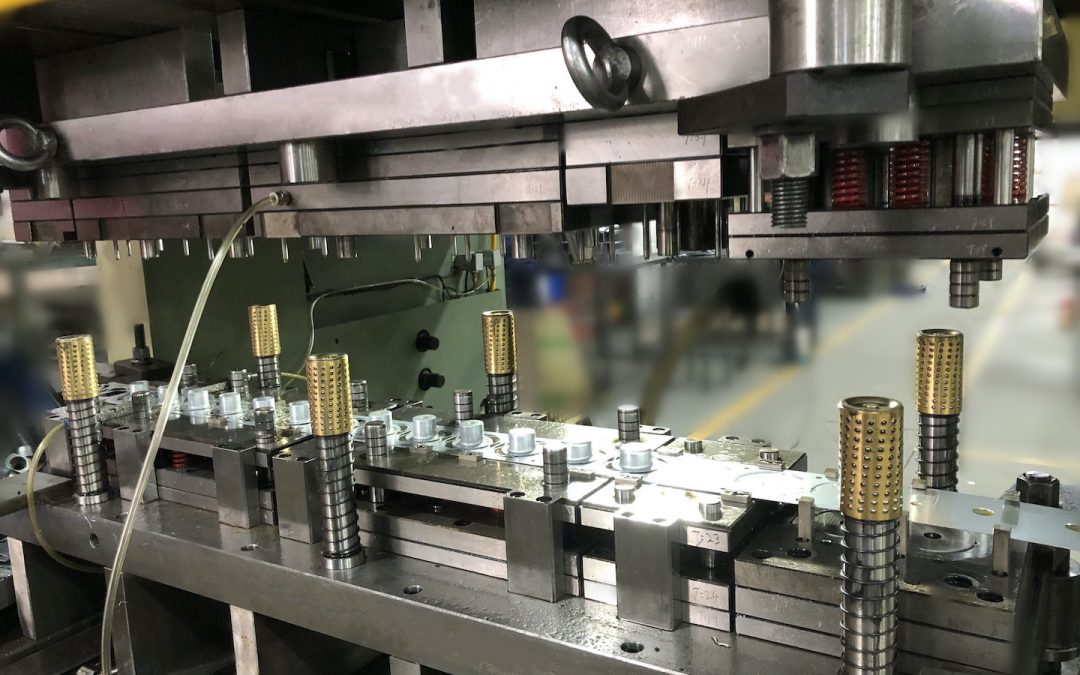The Development of Metal Stamping Processes: Technologies and Applications
The realm of steel marking processes has experienced a transformative journey noted by constant technology and adaptation to satisfy the needs of contemporary industrial practices. The applications cover across a spectrum of industries, each benefiting distinctly from the developments in steel stamping procedures.
Typical Metal Stamping Strategies
Standard metal stamping strategies have actually long been the foundation of producing procedures in numerous industries as a result of their efficiency and precision. The process entails developing a metal sheet or coil right into a wanted shape by pressing it in between a die and a punch. This approach is commonly utilized for generating large quantities of get rid of high precision at a fast speed.
Among the key benefits of conventional metal marking strategies is the ability to preserve tight resistances, making certain that each part fulfills the needed specifications continually. This level of precision is vital in markets such as vehicle, aerospace, and electronic devices, where also minor discrepancies can bring about substantial concerns.
In addition, standard metal stamping strategies use affordable solutions for mass production compared to various other manufacturing methods. The capacity to stamp parts in quick sequence lessens production time and minimizes labor prices, making it an eye-catching choice for organizations wanting to enhance their production processes.
Development of High-Speed Stamping

Among the essential benefits of high-speed marking is its capacity to preserve accuracy and consistency also at sped up handling rates. This accuracy is essential in industries where tight resistances and intricate styles are called for. Additionally, high-speed stamping allows for the handling of a vast array of products, consisting of aluminum, stainless-steel, and copper, additional increasing its applicability throughout numerous fields.
In addition, the development of high-speed stamping has made it possible for producers to see this here meet the expanding demand for complicated parts in industries such as auto, aerospace, and electronic devices (Metal Stamping). By leveraging the rate and accuracy of high-speed marking innovation, firms can boost their competition in a quickly progressing market landscape
Developments in Tooling Modern Technology
With the evolution of high-speed stamping enabling enhanced precision and effectiveness in metal creating processes, the area of steel marking has actually seen considerable advancements in tooling technology. Tooling technology plays a crucial function in steel stamping procedures, affecting factors such as item high quality, production speed, and general cost-effectiveness.
By using these advanced products, tooling producers can produce dies and mold and look at this web-site mildews that hold up against the high stress and temperatures entailed in steel marking procedures, resulting in longer tool life and improved manufacturing performance. Generally, these innovations in tooling innovation have revolutionized the steel stamping sector, allowing producers to accomplish greater levels of accuracy, productivity, and price financial savings.
Assimilation of Automation in Marking
As automation continues to improve the landscape of steel marking processes, the combination of automated systems has actually become significantly prevalent in modern-day production centers. Automated systems supply many benefits in steel marking, consisting of boosted effectiveness, improved accuracy, and improved security. By including automation into stamping procedures, makers can reduce cycle times, lessen product waste, and maximize production throughput.
Among the key parts of this automation in marking is using robot arms for tasks such as material handling, part control, and top quality assessment (Metal Stamping). These robot systems can carry out repeated and labor-intensive jobs with speed and precision, maximizing human operators to concentrate on more complicated procedures. Furthermore, automation enables real-time tracking and modification of marking procedures, leading to higher total process control and quality assurance
Furthermore, the combination of automation in stamping makes it possible for makers to accomplish consistent component high quality, meet limited tolerances, and improve overall productivity. As modern technology proceeds to development, the duty of automation in metal marking procedures is expected to increase better, driving advancement and performance in the production sector.
Applications Throughout Diverse Industries
Integrating steel stamping procedures throughout varied industries showcases the adaptability and versatility of this manufacturing technique. Furthermore, the device sector advantages from metal marking processes to produce parts for fridges, washing devices, and various other home appliances. The flexibility of steel stamping procedures makes it a valuable production technique throughout different industries, showing its value in contemporary production processes.
Final Thought
